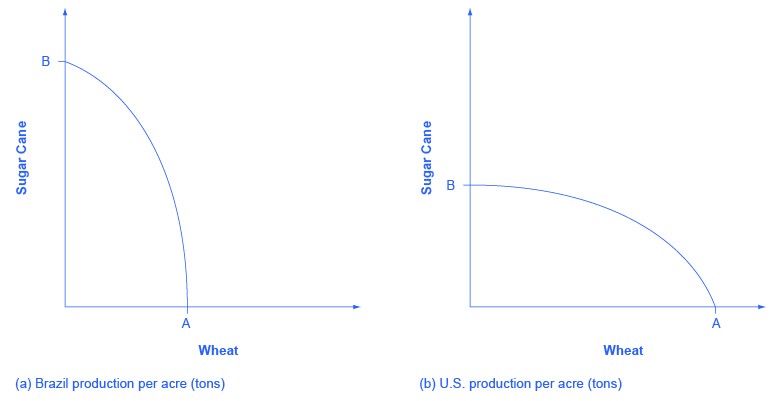The US does not have a comparative advantage in sugar production. Comparative advantage refers to the ability of a country to produce a good or service at a lower opportunity cost than another country. Opportunity cost represents the potential benefits an individual, investor, or business misses out on when choosing one alternative over another. In simpler terms, it’s what you give up to get something else.
Understanding Comparative Advantage
Comparative advantage hinges on the concept of opportunity cost. For instance, if a country can produce either 1 ton of sugar or 5 tons of wheat using the same resources, the opportunity cost of producing 1 ton of sugar is 5 tons of wheat. Countries specialize in producing goods where their opportunity cost is lowest.
US and Sugar Production: A Look at Opportunity Costs
The US, while capable of producing sugar, faces higher opportunity costs compared to other countries, particularly those with more favorable climates and lower labor costs. Countries like Brazil, with its ideal climate for sugarcane cultivation, can produce sugar at a significantly lower opportunity cost. This means Brazil sacrifices less of other potential goods (like wheat in our earlier example) to produce sugar.
 This graph shows two images. Both images have y-axes labeled “Sugar Cane” and x-axes labeled “Wheat.” In image (a), Brazil’s Sugar Cane production is nearly double the production of its wheat. In image (b), the U.S.’s Sugar Cane production is nearly half the production of its wheat.
This graph shows two images. Both images have y-axes labeled “Sugar Cane” and x-axes labeled “Wheat.” In image (a), Brazil’s Sugar Cane production is nearly double the production of its wheat. In image (b), the U.S.’s Sugar Cane production is nearly half the production of its wheat.
The graph above visually represents the production possibility frontiers (PPFs) of the US and Brazil. The steeper slope of Brazil’s PPF indicates a lower opportunity cost for sugar production. Conversely, the flatter slope of the US PPF demonstrates a higher opportunity cost for sugar. The US has a comparative advantage in producing other goods, such as wheat, where it can leverage its resources more efficiently.
The Role of Climate and Resources
Climatic conditions play a crucial role in determining comparative advantage in agriculture. Sugarcane thrives in tropical and subtropical climates, which Brazil possesses in abundance. The US, with its diverse climate, has regions suitable for sugarcane cultivation, but not to the extent of Brazil. Furthermore, land and labor costs in the US are generally higher, further increasing the opportunity cost of sugar production.
Conclusion: Why the US Lacks Comparative Advantage in Sugar
The US lacks a comparative advantage in sugar due to a combination of factors, primarily higher opportunity costs associated with production. These higher costs result from less favorable climatic conditions for large-scale sugarcane cultivation and higher land and labor costs compared to countries like Brazil. Consequently, the US focuses on producing goods where it holds a comparative advantage, like wheat, and trades for sugar with countries that can produce it more efficiently. This specialization and trade benefit all participating countries by increasing overall production and efficiency.